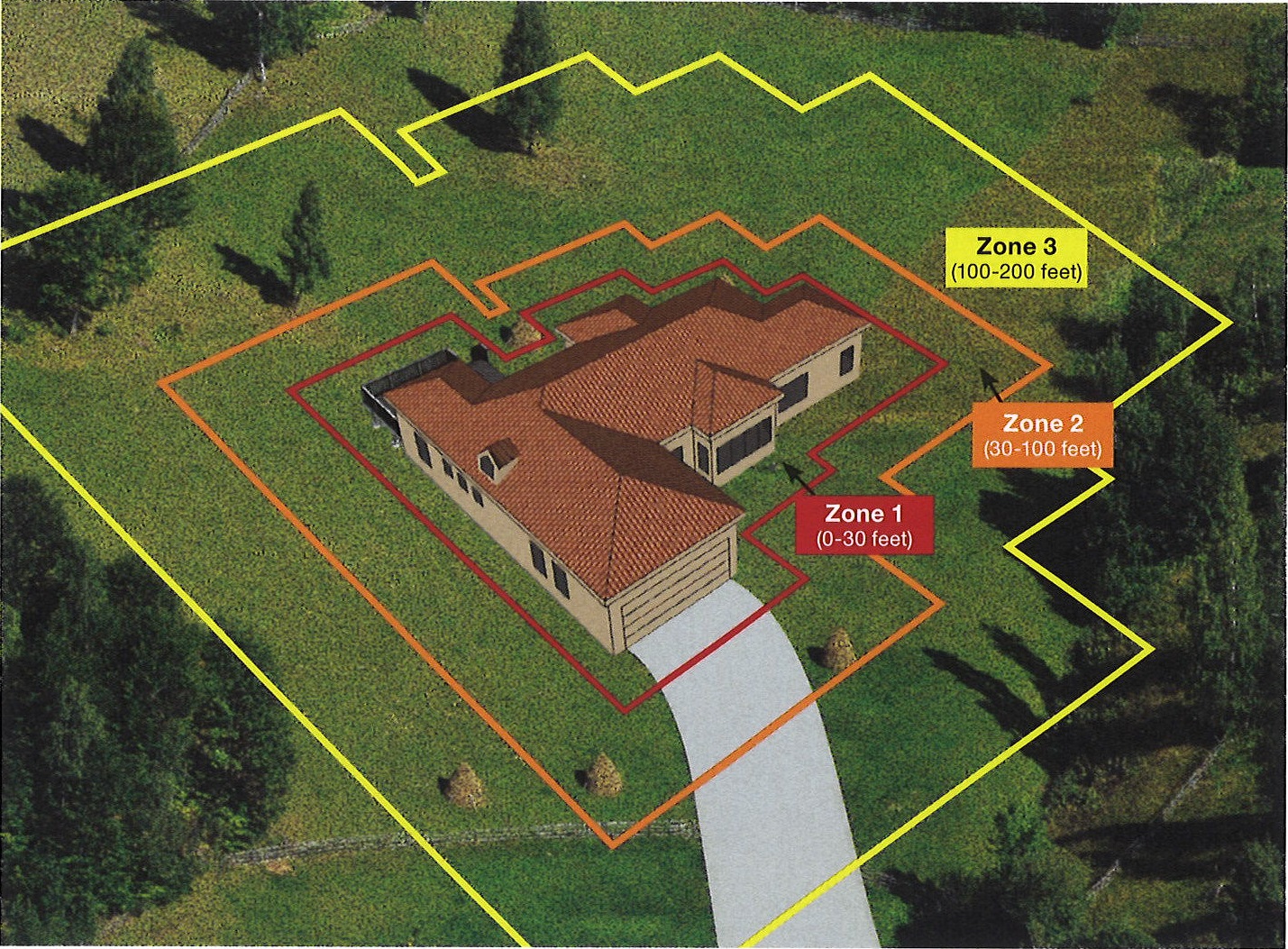Actions You Can Take Today!
- Weed around the property regularly, especially areas that a lawn mower is not appropriate for (tall dry grasses, rocky terrain, etc.).
- Remove all litter and other debris that accumulates around the building under vegetation, and in other collection areas.
- Remove leaf litter, straw and other debris from under and around propane tanks to create 10 feet of clearance around them.
- Eliminate ladder fuels by pruning tree branches on trees around the property to within at least 6 feet of the ground, using a bypass lopper, pruner saw or long reach/hand pruner.
- Remove flammable materials from underneath the house, decks and porches. Common flammables include scrap-wood, firewood and combustible furniture.
- Mow the lawn regularly to keep grasses shorter than 4 inches tall around the home. Do not mow in the heat of the day or when the wind is blowing. never mow in dry vegetation.
Create Defensible Space
Defensible space is the space between a structure and the wildland area that, under normal conditions, creates a sufficient buffer to slow or halt the spread of fire to a structure. It protects the home from igniting due to direct flame or radiant heat. Defensible space is essential to help protect a structure during a wildland fire.
You can create defensible space by removing weeds, brush and other vegetation from around your property.
Defensible space is made up of three zone around home . Follow the advice under each zone to help protect your home. 
Zone 1
0-30 feet around your home or to property line
- Use hard surfaces, such as concrete or noncombustible rock mulch, 0-5 feet around your home.
- Use non-woody, low growing herbaceous vegetation. Succulent plants and ground covers are good choices.
- Store firewood, and other combustible materials, at least 30 feet away from your garage, or attached deck.
- Trim back touching or over hanging branches from the roof to a distance of at least 10 feet.
Zone 2
30-100 feet around your home or to property line
- Create vegetation groups, "islands,' to break up continuous fuels around your home.
- Remove ladder fuels to create a separation between low-level vegetation and tree branches to keep fire from climbing up trees.
- Remove leaf and needle debris from the yard.
Zone 3
100-200 feet around your home or to property line
- Keep grass and wildflowers under 8 inches in height.
- Create and maintain a minimum of 10 feet between the tops of trees.
- Remove ladder fuels, creating a separation between low-level vegetation and tree branches to keep fire from climbing up trees.
- Remove dead trees and shrubs.
◊ Ladder Fuels are those that will allow the fire to climb from the surface fuels into the upper portion of the tree. They can be eliminated by increasing horizontal and vertical separation between vegetation.